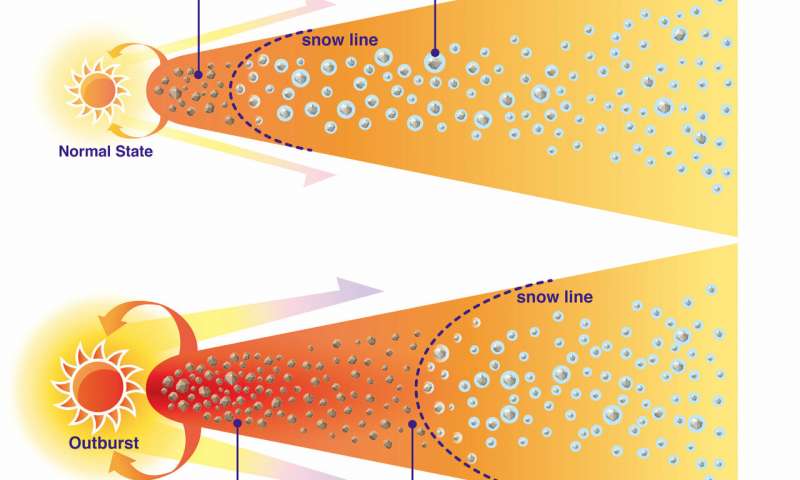At https://phys.org/print468573693.html … a highly collimated bipolar jet seen rising from the Red Square Nebula surrounding one of the stars. The study can be accessed at www.arxiv.org/abs/1901.08592 … for more information. The jet appears to be externally ionised. It consists of a pair of segments on either side of the host star- separated by gaps. The calculated speed of the jet is around 500km a second. Attempting to explain the phenomenon the authors propose two hypotheses. One is that the observed feature is a large excretion disc or stream of ejecta that is preferentially illuminated and ionised from the direction of the open cluster Messier 16. The scond one is that it is a stream of material ejected by Messier 16 (left behind as mass lost when the star interacts with the interstellar medium).
At https://phys.org/print468571374.html … organic molecules around a young star. Astronomers using the ALMA space telescope array have detected complex organic molecules around the young star V883 Ori – in a sudden outburst that is releasing molecules from icy compounds in the planet forming disc. It seems the observed composition of the star is similar to that of comets – or is this an assumption. The team was led by Jeong-Eun Lee of the Kyong Hee University in Korea. The molecules included acetone – the first time it has been unambiguously detected in a planet forming region or a proto planetary disc. Various molecules are frozen in ice around dust particles in such discs, it is believed, but the sudden flare up is thought to be heating the disc and sublimating the ice, releasing the molecules into gas. This all sounds a bit like the mainstream theory of comet sublimation, down playing the role of plasma (in the solar wind).

